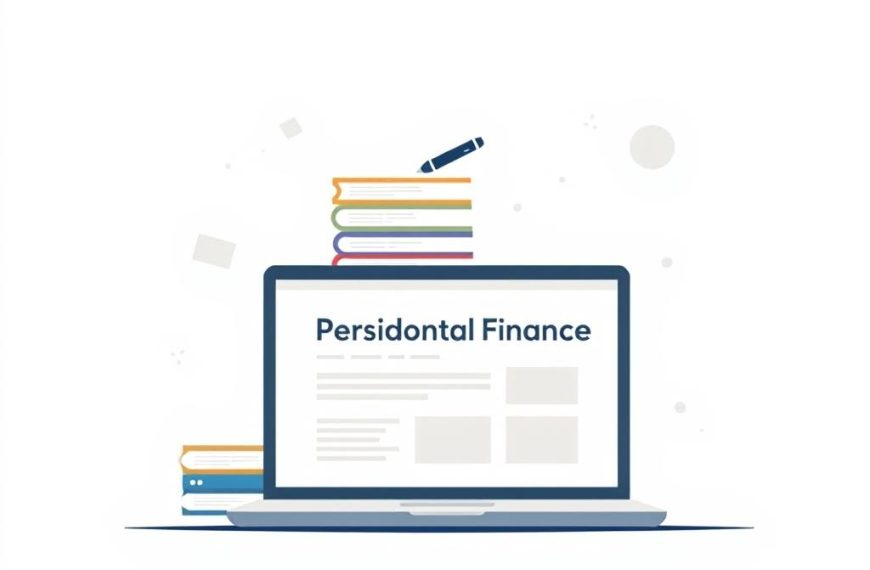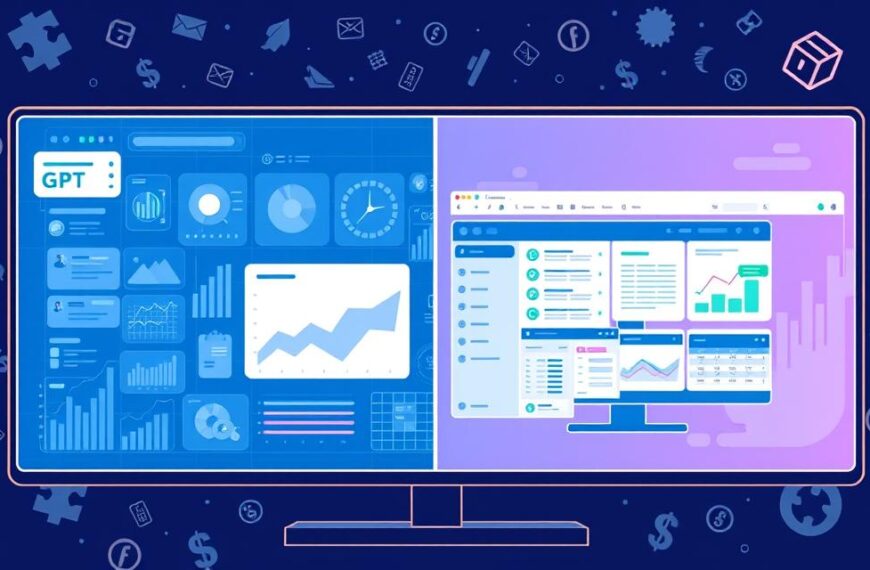Personal finance is about knowing how to manage your money well. It includes things like budgeting, investing, saving, and managing wealth1. Being financially literate means you have the skills and knowledge to handle the complex world of finance1.
Many organizations, like the OECD, and governments worldwide are working to improve financial education1. They want to help people understand and manage their finances better.
This wiki is your go-to for all things personal finance. It covers the basics and advanced strategies. Whether you’re new to finance or already know a lot, this wiki will help you make smart money choices and reach your financial goals.
Understanding Financial Literacy Fundamentals
Financial literacy is key to making smart financial decisions and reaching financial well-being. It’s about knowing how to manage your money well2. Knowing the basics of financial literacy is vital for a stable financial future.
Defining Financial Knowledge and Skills
Financial literacy means understanding things like budgeting, saving, and investing3. It also includes knowing how to use financial products and services2. These skills help people make good choices and reach their financial goals.
The Importance of Financial Education
Good financial education is essential for a financially savvy society2. Many households in the UK and US struggle with basic banking, showing the need for better financial literacy programs2. Also, many people lack retirement savings, highlighting the need to teach financial skills early2.
Core Components of Financial Literacy
The main parts of financial literacy are budgeting, saving, investing, borrowing, and managing risks3. Knowing these helps people make smart financial decisions, grow their wealth, and secure their future4.
Understanding financial literacy basics lets people make better choices and manage their money well3. This knowledge helps achieve financial goals, lowers financial stress, and boosts financial capability4.
Personal Finance Wiki: Essential Principles and Concepts
Personal finance covers many key areas that everyone needs to know. It includes financial planning, investment philosophy, budgeting, and retirement planning. The Bogleheads wiki stresses the need for simplicity and discipline in managing money5.
At the core of personal finance is making a detailed financial plan. This means checking your current finances, setting goals, and making a plan to reach them. Budgeting is key to tracking money in and out, helping you make smart choices about how to use it6.
- Start with a solid investment philosophy that uses strategies like diversification and long-term thinking to grow your portfolio.
- Make sure to set up an emergency fund. It’s a crucial safety net for unexpected money problems.
- Don’t overlook the importance of insurance, like life, health, and property insurance, to protect against risks.
- Learn about tax and estate planning to make your finances work better and avoid big losses.
- Plan for a secure retirement by looking into different investment options, like retirement plans at work and IRAs.
| Principle | Explanation |
|---|---|
| Financial Planning | Creating a detailed plan to manage your money well, including budgeting, investing, and retirement prep. |
| Investment Philosophy | Using a long-term, disciplined investment approach, focusing on diversification and managing risk. |
| Budgeting | Sticking to a budget to track income, expenses, and savings, helping you make better financial choices. |
| Retirement Planning | Planning and preparing for a financially secure retirement, looking into retirement accounts and investments. |
By understanding and applying these key principles, people can handle personal finance well and reach their financial goals. The Bogleheads wiki is a great resource, offering a detailed guide to these essential financial management pillars7.
“Simplicity is the ultimate sophistication.” – Leonardo da Vinci
Following these core principles and growing your financial knowledge helps build a strong financial base. This opens the door to long-term financial security and happiness.
Types of Personal Income and Management
People get their money from different places, each with its own traits and money management needs8. These include earned income, passive income, and portfolio income. Knowing the difference between these is key to managing money well and growing wealth over time.
Earned Income vs Passive Income
Earned income, like wages and salaries, is the main money source for most8. It’s what you get for working. Passive income, from things like investments or rental properties, doesn’t need you to work on it. Passive income can help build wealth by providing steady money with little effort.
Portfolio and Investment Income
Portfolio income comes from investments, like dividends and capital gains8. It’s great for building wealth over time. Good investment plans, like spreading out money and managing risks, help increase this income and reach financial goals.
Understanding Disposable Income
Disposable income is what’s left after paying taxes and other must-haves9. It’s important for personal finance because it’s what you can use for spending, saving, or investing. Managing this income well is essential for financial stability and success.
In short, there are many types of personal income, each with its own role in managing money8. Understanding and using these income types wisely can help improve financial health and build wealth.
Building a Strong Financial Foundation
Creating a solid financial base is key for lasting financial stability and safety. This means focusing on financial planning, budgeting, managing an emergency fund, and handling debt well10.
Having a good budgeting plan is essential for keeping finances in check. It helps ensure money is spent wisely on needs and wants. The 50/30/20 rule is a good guide: 50% for needs, 30% for wants, and 20% for savings or debt10.
It’s also wise to save for emergencies. Aim to save three to six months’ worth of living costs10.
- Make a detailed financial plan that fits your goals and priorities
- Set up a clear household budget to manage your money well
- Work on paying off debt to boost your credit score
- Get enough insurance to protect your finances
- Start planning for the future, like retirement, for a secure financial future
Your net worth shows how financially healthy you are. It’s found by subtracting debts from what you own10. Using the avalanche or snowball method can help pay off debt faster10. Setting up automatic payments and savings can also help keep your finances in good shape10.
“Businesses must maintain good financial health through judicious investment in growth and sustainability initiatives to ensure long-term viability.”10
By building a strong financial base, you and your business can face financial challenges with confidence. You can work towards your goals and secure a stable financial future10.
Investment Planning and Wealth Building
Building wealth over time needs good investment planning. Index funds are a popular choice because they offer low costs and diversification in the market11. They track big market indices like the S&P 500 and have shown strong returns, making them a good pick for many.
Other investment options like stocks, bonds, real estate, and alternative assets can also be part of a diverse portfolio12. Using strategies like asset allocation and diversification helps manage risk and balance returns with personal comfort levels.
Risk Management Strategies
Managing risk well is key in investment planning. Spreading investments across different types can lower overall risk and might increase long-term gains12. Knowing about compound interest is also crucial for growing wealth over time.
Portfolio Diversification Techniques
Spreading investments across different types, like stocks and bonds, can reduce the effect of market ups and downs on wealth12. By choosing investments based on risk and goals, people can aim for their financial dreams while keeping risks in check.
| Investment Strategy | Estimated After-Tax Return |
|---|---|
| Employer Retirement Plan Match | 50-100%12 |
| Paying Off High-Interest Debt | 10-30%12 |
| Contributing to Health Savings Account (HSA) | 8-10%12 |
| Contributing to Retirement Accounts without Employer Match | Approximately 8%12 |
| Investing in Taxable Accounts | 5-7%12 |
| Paying Off Medium-Interest Debt | 6-9%12 |
| Investing in 529 College Savings Plan | Approximately 8%12 |
| Paying Off Low-Interest Debt | 2-5%12 |
This table shows the estimated after-tax returns for different investment strategies. It highlights the importance of understanding and prioritising various financial opportunities12.
The FIRE (Financial Independence, Retire Early) movement has become popular, aiming for early retirement13. Yet, only a small number of Americans reach this goal13. Still, good investment planning and wealth-building strategies can help people of all ages reach their financial goals.
Digital Financial Literacy in Modern Times
In today’s fast-changing digital world, knowing how to manage money online is key. It’s not just about handling cash anymore. People need to understand fintech and digital banking to make smart choices and keep their info safe14.
Younger people are quick to learn digital skills, like using online tools. But, they might not always know what’s real online. This makes them open to scams and fraud14.
Being digitally savvy means more than just using online banking. It’s about knowing the risks and benefits of new fintech. It also means staying safe from cyber threats like fake photos and phishing14. As technology advances, learning these skills is more important than ever14.
Social media has changed how we talk and connect. It’s led to a new kind of journalism that’s personal and global. Understanding digital finance is key to staying safe and secure online.
| Metric | Value |
|---|---|
| Global Wealth (2023) | $432 trillion15 |
| Coins Minted per Minute (US, 2021) | |
| First Official Currency | Lydian Stater (600 BCE)15 |
| Paper Money Transition | Yuan Dynasty of China (1260 CE)15 |
| Bitcoin Value (2024) | $1.14 trillion15 |
“Digital literacy plays a crucial role in preventing individuals from falling victim to online manipulation, scams, and fraud.”
Retirement Planning and Long-term Financial Goals
Planning for retirement is key to personal finance. It involves making a detailed retirement plan, choosing the right pensions and investments, and thinking about estate planning. Retirement planning helps ensure you’re financially secure in your golden years. This way, you can reach your long-term financial goals16.
Retirement Policy Development
There are many types of retirement policies. Some offer a guaranteed payout based on your salary and years of service16. Others, like social pensions, give regular cash to older people, paid for by the government16. Military members might get retirement pay based on their service and active duty points16.
Hybrid plans mix different types of retirement plans. They offer a balance between security and flexibility16.
Pension and Investment Strategies
Employer pensions can be good for both workers and employers because of tax benefits16. Governments, unions, and groups fund these pensions. They also offer extra support for survivors or those with disabilities16.
Employers, insurance companies, or governments can set up retirement plans. These plans help support people when they retire16. Social pensions, found in over 80 countries, provide income security in retirement16.
Estate Planning Considerations
Estate planning is about managing and sharing out your assets. It includes planning for inheritance and legacy16. This might mean creating wills, trusts, and other legal documents. Good estate planning can also reduce taxes and make sure your wishes are followed17.
Retirement planning is complex and keeps changing. Countries update their policies to meet new economic and demographic needs17. Planning for retirement, including saving, pensions, investments, and estate planning, is key. It helps you achieve your financial goals and enjoy a comfortable retirement18.
| Retirement Planning Approach | Key Considerations |
|---|---|
| Conventional Retirement Planning | – Income replacement rates – Decumulation strategies – Regular retirement expenses |
| Safety-first Retirement Planning | – Contingency planning – Unforeseen spending shocks – Long-term care needs |
Retirement planning is a dynamic field. Countries update their policies to meet new needs17. Planning for retirement, including saving, pensions, investments, and estate planning, is essential. It helps you achieve your financial goals and enjoy a comfortable retirement18.
“Retirement is not the end of the road. It is the beginning of the open highway.”
– Unknown
Emergency Fund and Risk Management
Having a strong financial safety net is key for long-term financial health. An emergency fund is a vital part of this net. It helps cover unexpected costs or times when you don’t earn money19.
Managing risks well is also crucial for keeping finances stable. This means spotting risks, figuring out their impact, and finding ways to lessen them19. Getting the right insurance for health, life, property, and legal risks is also important20.
- Risks can come from many places, like market changes, political issues, project failures, legal problems, accidents, natural disasters, attacks, and surprises19.
- Managing threats often means avoiding, reducing, passing on, or keeping risks19.
- It’s best to tackle risks with big impacts first19.
Building financial resilience with an emergency fund and smart risk management is vital. It helps people and families deal with surprises and grab chances. This way, they can reach their financial dreams20.
“Risk management involves the identification, evaluation, and prioritization of risks, followed by the minimization, monitoring, and control of the impact or probability of those risks occurring.”19
| Risk Management Principles | Description |
|---|---|
| Value Creation | Risk management should create and protect value for an organization. |
| Integration | Risk management should be an integral part of organizational processes. |
| Systematic Process | Risk management should follow a structured and comprehensive approach. |
| Flexibility | Risk management should be adaptable to changing circumstances. |
| Transparency | Risk management should be transparent and inclusive. |
| Continual Improvement | Risk management should undergo continuous improvement. |
| Responsiveness to Change | Risk management should be responsive to emerging risks and opportunities. |
By following these principles, people and businesses can build a solid risk management plan. This boosts their financial resilience and helps them achieve their long-term financial goals19.
Conclusion
Effective financial empowerment and lifelong learning are key for financial well-being and economic participation. This personal finance wiki has covered the basics and strategies for personal finance. It helps individuals understand financial literacy and build a strong financial base. This knowledge empowers them to make smart financial choices and control their future.21
Keeping up with lifelong learning and using financial knowledge is vital. The LIMRA study showed over 75% of employees want to learn more about their benefits every year. This highlights the need for ongoing education.21 By staying updated, people can handle personal finance’s complexities and improve their financial well-being.
The journey to financial empowerment is ongoing. Despite the National Financial Capability Study showing many adults struggle with basic finance, this wiki offers the tools to overcome these issues.21 By embracing lifelong learning and applying financial principles, people can fully engage in the economy. This ensures their long-term financial security.
FAQ
What is personal finance and why is financial literacy important?
Personal finance is about making smart money choices. This includes budgeting, saving, and investing. It’s key to understanding money well. Governments worldwide are working to improve financial education.
What are the core components of financial literacy?
Financial literacy means knowing how to handle money wisely. It includes skills and knowledge for managing money well. This includes understanding numbers, financial products, and applying this knowledge in real life.
What are the key personal finance principles and concepts?
Key personal finance ideas include planning your finances and choosing investments wisely. Important topics include budgeting, saving for emergencies, and planning for retirement.
What are the different types of personal income and how should they be managed?
Personal income comes from jobs, investments, and other sources. After taxes, you have disposable income for spending, saving, or investing. Knowing how to manage these types is vital for good financial management.
What are the essential elements of building a strong financial foundation?
A solid financial base starts with a good plan and a budget. It also means saving for emergencies and managing debt. Planning for the future, like retirement, is also important.
How can individuals plan and invest for wealth building?
Planning for investments means understanding different types of funds. It’s about balancing risk and return. Diversifying your investments helps manage risk.
How has digital technology impacted personal finance and financial literacy?
Digital finance combines old money knowledge with new tech skills. It’s about knowing fintech and using digital tools safely. As more services go online, being tech-savvy is key for smart money decisions.
What are the key considerations for retirement planning and long-term financial goals?
Retirement planning means setting a policy and understanding pensions. It’s about calculating needs and choosing investments wisely. Estate planning ensures your assets are managed and passed on as you wish.
How can individuals manage financial risks and build resilience?
An emergency fund is a safety net for unexpected costs. Risk management means covering health, life, and property risks. Building resilience through these steps is essential for financial stability.
Source Links
- Financial literacy – https://en.wikipedia.org/wiki/Financial_literacy
- Finance for Beginners: Your Guide to Money Basics – https://wikiknowledgehub.com/finance-for-beginners-your-guide-to-money-basics/
- What Does Finance Mean? Its History, Types, and Importance Explained – https://www.investopedia.com/terms/f/finance.asp
- Financial Planning: What It Is and How to Make a Plan – https://www.investopedia.com/terms/f/financial_plan.asp
- Financial economics – https://en.wikipedia.org/wiki/Financial_economics
- Managing a windfall – Bogleheads – https://www.bogleheads.org/wiki/Managing_a_windfall
- Public finance – https://en.wikipedia.org/wiki/Public_finance
- Personal income – https://en.wikipedia.org/wiki/Personal_income
- Household income in the United States – https://en.wikipedia.org/wiki/Household_income_in_the_United_States
- Financial Health: Definition and How to Measure and Improve It – https://www.investopedia.com/terms/f/financial-health.asp
- Dave Ramsey – https://en.wikipedia.org/wiki/Dave_Ramsey
- Prioritizing investments – Bogleheads – https://www.bogleheads.org/wiki/Prioritizing_investments
- Financial Independence, Retire Early (FIRE): How It Works – https://www.investopedia.com/terms/f/financial-independence-retire-early-fire.asp
- Digital literacy – https://en.wikipedia.org/wiki/Digital_literacy
- The History of Money: Bartering to Banknotes to Bitcoin – https://www.investopedia.com/articles/07/roots_of_money.asp
- Pension – https://en.wikipedia.org/wiki/Pension
- Retirement – https://en.wikipedia.org/wiki/Retirement
- Category:Retirement planning – finiki – https://www.finiki.org/wiki/Category:Retirement_planning
- Risk management – https://en.wikipedia.org/wiki/Risk_management
- Personal risk management – RISKS MANAGEMENT wiki – https://risks.wiki/risk-management-practices/personal-risk-management/
- Make A Wiki For Your Benefits – https://pendant.io/blog/make-a-wiki-for-your-benefits


















